SUMMARY
This is AI generated summarization, which may have errors. For context, always refer to the full article.
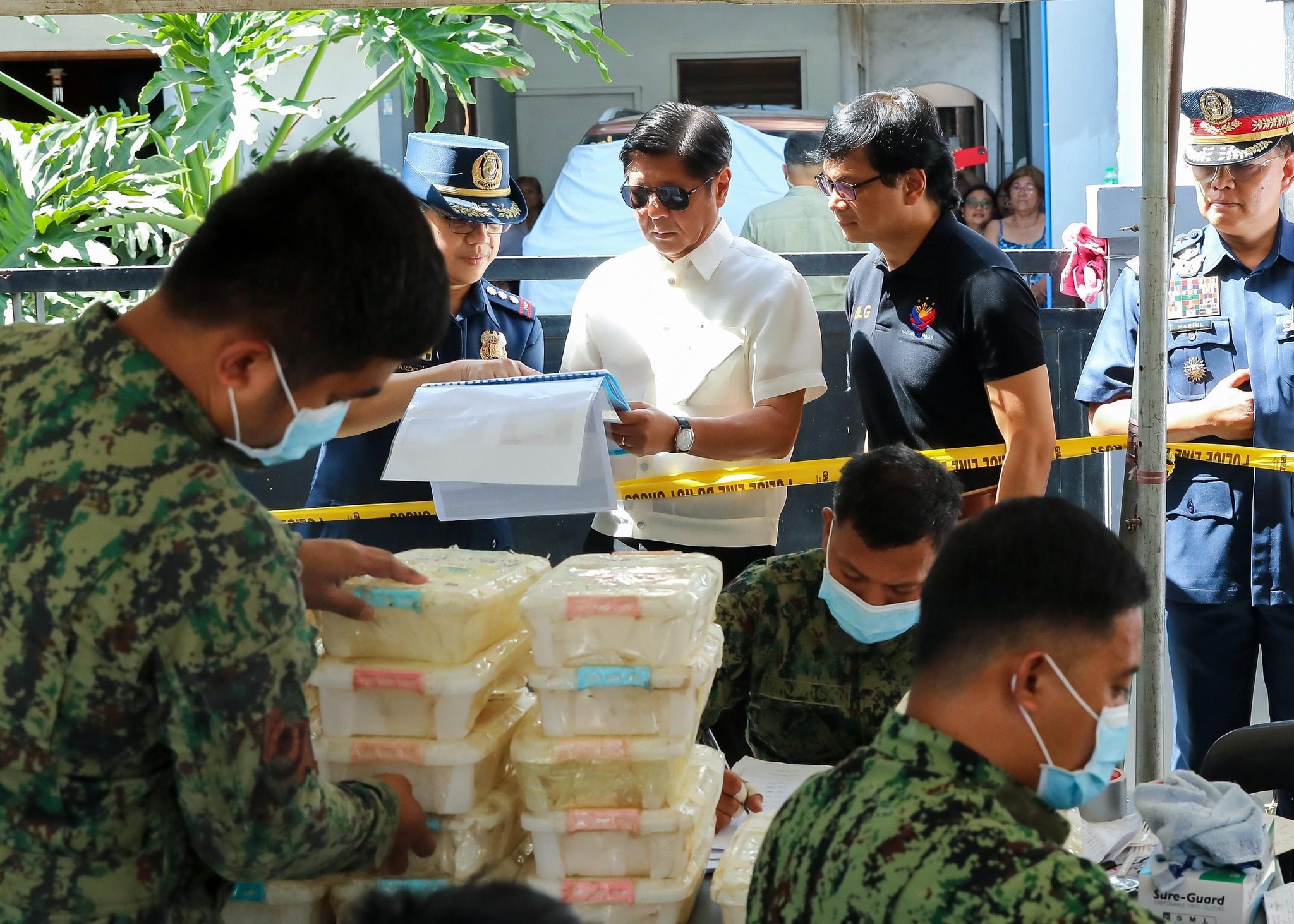
Early this week, the administration of President Ferdinand Marcos Jr. boasted of its achievement: seizure of P13.3-billion worth of suspected shabu (methamphetamine) in Batangas. The Philippine National Police (PNP) even called it “a historic milestone in Philippine law enforcement.”

But in less than a week, authorities retracted their count of the seized drugs, raising questions about integrity.
The police said that after their inventory with the Philippine Drug Enforcement Agency (PDEA) the actual weight of their seized drugs on April 15 was 1,424.253 kilos, and not 1.8 tons. This means that the estimated value should be P9.8 billion, and not P13.3 billion, as earlier reported.
Department of the Interior and Local Government (DILG) Secretary Benhur Abalos, who oversees the PNP, was quick to explain and held a press conference to clear the air. Abalos said the initial value was only based on their estimation.
“Dahil ito’y napakarami, mahirap tantiyahin dito. So tinanong po namin, of course, kailangang i-assess mo ‘yan kung gaano karami. Puro estimate-estimate lang po ‘yan. Kung maririnig ‘nyo, paulit-ulit kong sinasabi, ‘Ito’y more or less, ito’y in-estimate ng PDEA, higit-kumulang…We just based it on experience of PDEA,” the DILG chief said on Thursday, April 18.
(Since the drugs were a lot, it’s hard to estimate. So we asked, because we need to determine the quantity. We only did estimations. If you heard it, I said repeatedly, “More or less, the PDEA estimated this, more or less.” We just based it on PDEA’s experience.)
PNP Calabarzon chief Police Brigadier General Paul Kenneth Lucas has the same explanation. PDEA Deputy Director General Renato Gumban, meanwhile, explained how they do their estimations.
“Mag-estimate lang naman, titingnan ang number of sacks, ilang average ang number of sacks. I-multiply mo lang naman ‘yon, tapos kunin mo ‘yong average per box na ‘yan. Usually mga one kilo, estimate average no’n. I-multiply mo siya sa street value ng meth, which is P6.8 million per kilo. ‘Yon ang lumabas na figures,” Gumban said during the press conference.
(We only estimated by checking the number of sacks, what is the average number of sacks. You multiply the number and then you get the average per box. Usually, the estimate average is one kilo. You multiply it by the street value of meth, which is P6.8 million per kilo. That’s how we computed the figures.)
What happened before?
Authorities said the drugs were seized during an operation in Barangay Pinagkrusan, in Alitagtag town at around 8 am. They arrested a certain “Al” for alleged violation of section 5 of Republic Act No. 9165 or the Comprehensive Dangerous Drugs Act of 2002.
The PNP said the Alitagtag municipal police conducted a checkpoint operation based on intelligence that led to the illegal drugs’ confiscation. The national police added that the suspected shabu tested positive for Methamphetamine Hydrochloride during an initial screening conducted by the PDEA.
The suspect now faces complaints for alleged violation of RA No. 9165 and Republic Act No. 4136 or the Land Transportation and Traffic Code Rules. He is also under the custody of the Batangas provincial police.
One can argue that the mistake can simply be attributed to human error; an honest mistake. But the PNP manual is clear: for warrantless seizures of drugs such as in buy busts, the integrity of the seized items must be preserved.
According to the PNP Operational Procedures: “The photographing, markings, and physical inventory must be done at the place of apprehension, unless for justifiable reasons, the photographing, markings, and physical inventory may be made at the nearest police station or office of the apprehending officer or team, ensuring that the integrity and evidentiary value of the seized items remain intact and preserved.”
Bare minimum
Marcos was mighty proud of the Monday drug operation. In fact, Marcos himself went to Batangas to inspect the confiscated shabu. The operation came in handy for him to highlight his “different approach” against illegal drugs.
“This is the biggest shipment of shabu na nahuli natin, but not one person died. Walang namatay, walang nagputukan, walang nasaktan. Basta’t inoperate natin nang dahan-dahan, ‘yon naman dapat ang approach,” Marcos said.
(This is the biggest shipment of shabu that we’ve seized, but not one person died. No one died, no one was shot, no one was hurt. All we did was to operate carefully, because that should be the approach.)
Human rights group iDEFEND pointed out the government’s continuing war on drugs policy. So far, Marcos has yet to repeal or retract former Rodrigo Duterte’s memorandum that operationalized Oplan Tokhang, where police officers were told they can “neutralize” resisting suspects.
“This should be the norm, not the exception. Ph (Philippine) drug war continues to kill with impunity. Without repealing national policy on Tokhang, without prosecution of EJKs (extrajudicial killings), it remains lethal to Filipinos,” the group said.
Former senator Leila de Lima, one of the fiercest critics of Duterte and his drug war, also reacted to Marcos’ remarks: “Puwede naman talagang magtagumpay ang kampanya laban sa droga nang walang patayan o karahasan. Mamamatay-tao lang kasi ‘yong dating pangulo.” (The campaign against drugs can really be successful without killings or violence. It just so happened that the former president is a killer.)
When Marcos took office, he said his drug war would be slightly different – focusing on prevention and rehabilitation rather than law enforcement. Despite this, people continue to be killed.
There have been 621 drug-related killings under the Marcos administration, as of April 15, based on the monitoring of Dahas Project. The initiative is led by the University of the Philippines’ Third World Studies center and aims to monitor and record drug-related killings in the country. – Rappler.com
Add a comment
How does this make you feel?

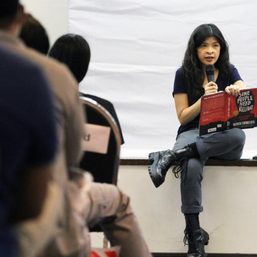
![[OPINION] ‘Some people need killing’](https://www.rappler.com/tachyon/2024/04/tl-some-people-need-killing-04172024.jpg?resize=257%2C257&crop_strategy=attention)
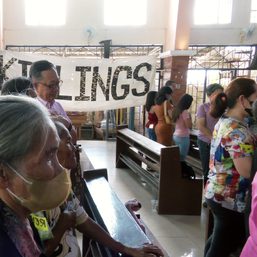
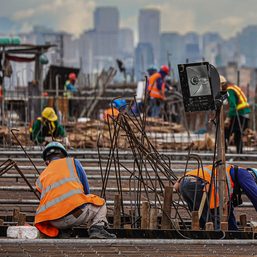



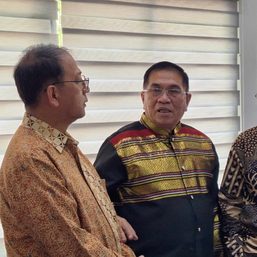
![[EDITORIAL] Bakit hindi mahuli-huli si Apollo Quiboloy?](https://www.rappler.com/tachyon/2024/04/animated-quiboloy-investigation-april-2024-carousel-edit.jpg?resize=257%2C257&crop_strategy=attention)

![[The Slingshot] Alden Delvo’s birthday](https://www.rappler.com/tachyon/2024/04/tl-alden-delvo-birthday.jpg?resize=257%2C257&crop=263px%2C0px%2C720px%2C720px)
![[EDITORIAL] Ang low-intensity warfare ni Marcos kung saan attack dog na ang First Lady](https://www.rappler.com/tachyon/2024/04/animated-liza-marcos-sara-duterte-feud-carousel.jpg?resize=257%2C257&crop=294px%2C0px%2C720px%2C720px)
![[Newsstand] Duterte vs Marcos: A rift impossible to bridge, a wound impossible to heal](https://www.rappler.com/tachyon/2024/04/duterte-marcos-rift-apr-20-2024.jpg?resize=257%2C257&crop=278px%2C0px%2C720px%2C720px)
![[WATCH] ‘Dambana ng Paghilom’: A shrine to immortalize drug war victims](https://www.rappler.com/tachyon/2024/05/dambana-ng-paghilom-ejk-drug-war-may-1-2024-010-scaled.jpg?resize=257%2C257&crop=124px%2C0px%2C1707px%2C1707px)
![[Rappler’s Best] Patricia Evangelista](https://www.rappler.com/tachyon/2024/04/unnamed-9-1.jpg?resize=257%2C257&crop=486px%2C0px%2C1333px%2C1333px)
There are no comments yet. Add your comment to start the conversation.